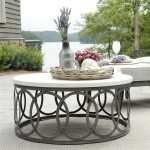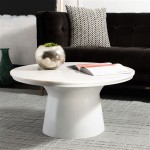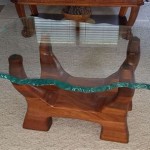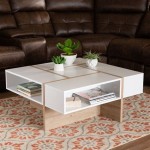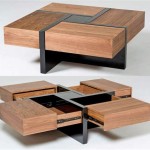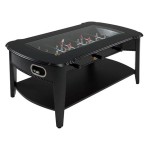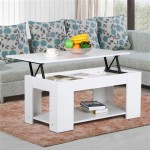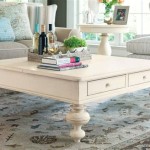Coffee Table Japanese: Blending Elegance and Functionality in Your Living Space
In the world of interior design, the coffee table occupies a central position, serving as both a functional element and a stylish centerpiece in your living room. For those drawn to the aesthetics and simplicity of Japanese design, the coffee table Japanese presents a unique opportunity to infuse your space with a sense of serenity, elegance, and functionality. ### The Japanese Aesthetic: A Fusion of Beauty and Purpose Japanese culture places a strong emphasis on simplicity, minimalism, and a deep appreciation for natural materials. These principles are vividly reflected in the design of coffee tables Japanese, which often feature clean lines, understated ornamentation, and a focus on showcasing the inherent beauty of the materials used. ### Key Characteristics of Coffee Table Japanese 1.Minimalist Design:
Coffee tables Japanese typically embody the minimalist aesthetic, prioritizing functionality over excessive ornamentation. Their simple, uncluttered designs exude a sense of serenity and allow the beauty of the natural materials to take center stage. 2.Natural Materials:
Wood, particularly light-colored woods like oak, maple, and ash, is a common choice for coffee tables Japanese. The natural grains and textures of the wood add warmth and organic appeal to the space. Bamboo, rattan, and tatami mats are also occasionally used, bringing a distinct Japanese flair to the design. 3.Low Height:
Coffee tables Japanese are often characterized by their low height, which promotes a sense of intimacy and encourages people to gather around for conversations or activities. This low profile also creates a harmonious balance with the traditional seating arrangements often found in Japanese homes, such as floor cushions or tatami mats. 4.Geometric Shapes:
Clean geometric shapes, such as rectangles, squares, and circles, dominate the design vocabulary of coffee tables Japanese. These shapes provide a sense of order and structure, complementing the minimalist aesthetic and creating a visually pleasing appearance. 5.Functional Versatility:
While primarily serving as a coffee table, many Japanese-style coffee tables incorporate clever design elements that enhance their functionality. Some may feature hidden storage compartments, drawers, or adjustable heights, allowing you to adapt the table to different uses, such as a dining table or a work surface. ### Choosing the Right Coffee Table Japanese for Your Space 1.Consider the Room's Size:
The size of your living room and the available space should guide your choice of coffee table Japanese. A larger coffee table may overwhelm a small room, while a smaller table might get lost in a spacious area. 2.Match Design Styles:
Ensure that the style of your coffee table Japanese complements the overall design aesthetic of your living room. If your décor leans towards a modern minimalist style, a sleek and simple coffee table Japanese would be a harmonious choice. 3.Prioritize Functionality:
Think about how you intend to use your coffee table Japanese. If you need additional storage space, opt for a table with built-in compartments or drawers. If you frequently entertain guests, a larger table with ample surface area might be more suitable. 4.Pay Attention to Material Quality:
The quality of materials used in the coffee table Japanese is crucial for its longevity and overall appearance. Look for solid wood or high-quality materials that can withstand regular use and maintain their beauty over time. ### Inspiration for Styling Your Coffee Table Japanese 1.Zen-Inspired Simplicity:
Create a serene and tranquil atmosphere by keeping your coffee table Japanese uncluttered. Display a few carefully chosen decorative items, such as a ceramic vase, a single flower arrangement, or a small sculpture. 2.Wabi-Sabi Charm:
Embrace the Japanese concept of Wabi-Sabi, which celebrates the beauty of imperfection and impermanence. Choose a coffee table Japanese with natural wood grains and slight imperfections, as these add character and a sense of authenticity. 3.Functionality Meets Aesthetics:
Elevate the functionality of your coffee table Japanese by incorporating trays, coasters, and small storage baskets. These items can help organize remote controls, magazines, and other necessities while maintaining a clean and organized appearance. 4.Seasonal Touches:
Infuse your coffee table Japanese with seasonal charm by incorporating elements that reflect the time of year. For example, display a bowl of fresh fruits in the summer, colorful autumn leaves in the fall, or a wintery arrangement of pine cones and ornaments during the holidays. With its timeless elegance and functional versatility, a coffee table Japanese can effortlessly elevate the ambiance of your living space. Whether you seek a minimalist aesthetic, appreciate the beauty of natural materials, or simply desire a functional centerpiece, a coffee table Japanese offers a harmonious blend of form and function, inviting you to experience the tranquility and serenity of Japanese design in your own home.
Japanese Low Table Kang Tablehousehold Solid Wood Tatami Small Tablesittingsmall Coffee Tea Window Sill Customization

Japanese Style Coffee Table Small Large Solid Wood Apollobox

Low Square Coffee Table Dining Desk Japanese Floor

Cobrina Coffee Table Ookkuu

Barringer Coffee Table 3d Model Conde House Japan

Japanese Style Coffee Table Ash Wood Glass 2 Patterns 1st Missing Piece
Japanese Slab Coffee Table Oregon Black Walnut By Sjk Design Studios Wescover Tables

A Japanese Style Coffee Table With Rusticated Top Avery Dash Collections

Low Dining Table Japanese Coffee

Low Japanese Style Wabi Sabi Chic French Oak Coffee Table France C 1980

